Description
Introduction to DBB Valves
Double Block and Bleed (DBB) valves, as their name implies, are specialized valve systems encompassing two isolation ‘block’ valves and a ‘bleed’ valve, all integrated into a single unit. The primary function of a DBB valve is to isolate the downstream system and vent trapped pressure pockets between the two sealing points (the block valves) to the atmosphere or a holding tank. This configuration facilitates safe and efficient maintenance or removal of downstream equipment.
DBB valves are distinguished by their compact and robust design, offering superior sealing capabilities that minimize the risk of leakage, making them an essential component in the realm of fluid control. A noteworthy feature of these valves is the minimal pressure drop they induce, which significantly enhances the overall operational efficiency of the system.
Parameters of DBB Valve
- Name: Double Block and Bleed DBB Valve
- Material: A105/SS 304/SS 316/F51/F53/F55 or according to customer needs
- Feature: Easy to Operate; High Accuracy; High Efficiency; Long Life; and Low Cost
- Standard: ASTM, ASME B16.5
- Advantages: Improved safety, leak paths reduced by up to 60%; Reduced costs, installation and component costs reduced by up to 70%; Reduced susceptibility to problems caused by vibration
The Importance of DBB Valves in Industries
DBB valves are widely recognized for their critical role in various industries, particularly those dealing with volatile substances under high pressure. These industries include oil and gas, petrochemicals, power generation, maritime, mining, and chemical production.
- Oil and Gas: DBB valves are integral to the safe and efficient operation of oil and gas infrastructure, particularly offshore platforms and processing facilities. They provide reliable isolation for critical processes and equipment, ensuring safety during maintenance and shutdown procedures.
- Petrochemical: In petrochemical plants, where substances are often corrosive and operate under extreme temperatures and pressures, DBB valves offer the necessary durability and reliability to withstand these harsh conditions.
- Power Generation: DBB valves are used in power plants (nuclear, thermal, and hydroelectric) to provide isolation and venting capabilities for turbines, boilers, and other critical equipment.
- Maritime: In the maritime industry, DBB valves are used to manage and control the handling of various fluid cargoes, ensuring safe and efficient operations.
- Mining: These valves contribute to secure isolation in the hazardous environments of mining operations, providing safe procedures during maintenance and emergencies.
- Chemical Production: DBB valves are fundamental in chemical plants, where they handle and control highly reactive substances, thus ensuring operational safety.
Understanding the ‘Double Block and Bleed’ Concept
Explanation of ‘double block’
The term ‘double block’ in Double Block and Bleed (DBB) refers to the two isolation ‘block’ valves that are incorporated into the valve system. These block valves serve as the primary and secondary barriers, functioning to isolate the downstream system from the upstream pressure. They effectively prevent the flow of fluid or gas through the system when they are in the closed position.
The double block configuration is particularly useful in applications dealing with hazardous fluids or gases or in high-pressure systems where a single isolation point may not sufficiently guarantee the safety of personnel or the integrity of downstream equipment. The first block valve isolates the system from the pressure source, while the second block valve provides an additional line of defense, ensuring that the system remains secure even if the first valve leaks or fails. This redundancy is a critical safety feature in many industrial applications.
Understanding ‘bleed’ in DBB valves
The ‘bleed’ in Double Block and Bleed (DBB) refers to the bleed valve that is positioned between the two block valves. The primary function of the bleed valve is to vent or ‘bleed off’ the trapped pressure or fluid that may be present between the two block valves to the atmosphere or a holding tank.
When both block valves are closed, the bleed valve can be opened to relieve any residual pressure or trapped medium, creating a safe environment for maintenance or removal of downstream equipment. It also serves as a verification method; if any fluid or gas leaks past the first block valve when it’s closed, it will be expelled when the bleed valve is opened, indicating a leak or a failure in the first block valve. This bleed mechanism plays a vital role in ensuring system safety and maintaining the integrity of process systems.
Types of DBB Valves
DBB Ball Valves
DBB Ball Valves are highly popular due to their simple yet robust design. The ball valve uses a hollow, perforated, and pivoting ball to control the flow of fluids or gases. The inherent tight shut-off capability of ball valves makes them ideal for applications where leakage prevention is of paramount importance. Industries such as oil refineries, natural gas production, chemical processing plants, and water regulation facilities often prefer using DBB Ball Valves.
DBB Gate Valves
DBB Gate Valves are also widely used due to their reliability and cost-effectiveness. They consist of a rectangular gate that slides up or down within an enclosed chamber, thereby allowing or blocking passage through the valve. Due to their affordable nature and high durability, gate valves find applications in a variety of sectors, from engineering to plumbing.
Working Principles of DBB Valves
The operation of Double Block and Bleed (DBB) valves hinges on the coordinated action of two isolation valves, typically referred to as block valves, and one bleed valve. Each component has a specific role, facilitating secure isolation and the safe venting of trapped pressure.
The First Block Valve (Primary Isolation): In the open state, this valve allows the flow of fluid or gas through the system. When closed, it isolates the system from the upstream pressure source. The primary isolation valve is usually the first line of defense against system pressure.
The Second Block Valve (Secondary Isolation): This valve, when open, permits flow downstream of the first block valve. Upon closure, it provides an additional layer of isolation, safeguarding against potential leakage or failure of the primary block valve. The secondary block valve ensures an extra degree of safety in the system.
The Bleed Valve: Positioned between the two block valves, the bleed valve serves a pivotal function. When the block valves are closed, opening the bleed valve vents or ‘bleeds off’ any residual pressure or trapped medium between the block valves. This release of pressure helps create a safe environment for maintenance work or equipment removal.
In a standard operation, the following steps are followed:
- Close the first block valve to isolate the upstream system.
- Close the second block valve to provide additional isolation.
- Open the bleed valve to vent the trapped medium between the two block valves. This step can also reveal any leakage from the first block valve, a valuable indicator of a need for maintenance.
FAQs on DBB Valves
What is the difference between a single block and bleed valve and a double block and bleed valve?
A single block and bleed valve features one isolation valve (block) and one bleed valve. The isolation valve allows or restricts the flow of fluid, while the bleed valve enables the release of trapped fluid between the isolation valve and the downstream system.
On the other hand, a double block and bleed valve consists of two isolation valves and one bleed valve. The two isolation valves provide an additional layer of safety by isolating the system from both the upstream and downstream sides. The bleed valve, located between the two isolation valves, drains the space between them, ensuring no fluid or gas is trapped that could potentially cause system failure or safety hazards.
How does a DBB valve work?
A DBB valve operates through a coordinated action of two block valves and a bleed valve. Initially, both block valves are open, allowing fluid to flow through the system. Upon system isolation, the first block valve is closed, cutting off the upstream pressure. Then, the second block valve is closed, providing additional isolation. Finally, the bleed valve is opened to vent any trapped pressure or fluid between the two block valves. This mechanism ensures safe isolation and venting of the system.
What are the safety benefits of using DBB valves?
DBB valves provide enhanced safety in several ways. They offer double isolation from pressure sources, which is critical in high-pressure or hazardous fluid applications. The bleed functionality allows for the venting of trapped pressure between the block valves, preventing potential system overpressure. By doing so, they also allow for the verification of the seal integrity of the first block valve. In case of a leak, the trapped fluid or gas will be expelled when the bleed valve is opened, indicating a need for maintenance or valve replacement.
How to install and maintain a DBB valve?
Installing a DBB valve requires careful planning and adherence to safety procedures. The valve must be correctly oriented, and the connections should be securely tightened to prevent leaks. Regular maintenance is vital to ensure the valve’s longevity and proper functioning. This includes periodic inspection for wear and tear, seal integrity checks, and functional tests of the block and bleed mechanisms. Any identified issues should be promptly addressed to ensure the valve operates safely and effectively.
Conclusion
Double Block and Bleed (DBB) valves play an essential role in various industries, such as oil and gas, petrochemicals, power generation, maritime, mining, and chemical production. Their design, integrating two isolation ‘block’ valves and a ‘bleed’ valve, provides superior safety and efficiency in controlling fluid flow, isolating downstream systems, and venting trapped pressure pockets. These features make DBB valves invaluable in high-pressure environments and when handling hazardous substances.
DBB valves operate through the coordinated action of the two block valves and the bleed valve. The block valves provide primary and secondary barriers against upstream pressure, while the bleed valve allows for the venting of trapped pressure, also serving as an indicator of potential leaks. Their installation and maintenance require strict adherence to safety procedures to ensure longevity and optimal performance. As industrial processes evolve, the significance of DBB valves is set to increase, underscoring their importance in maintaining safe and efficient operations.

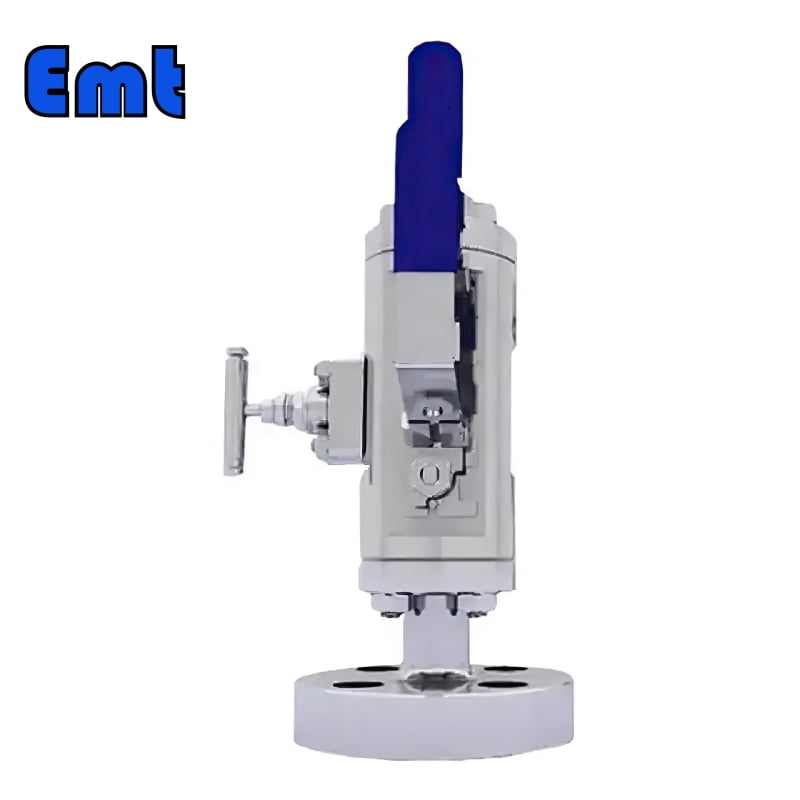
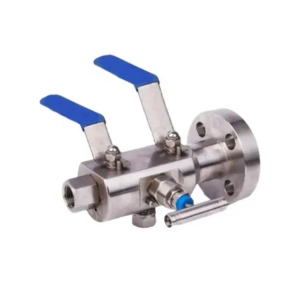
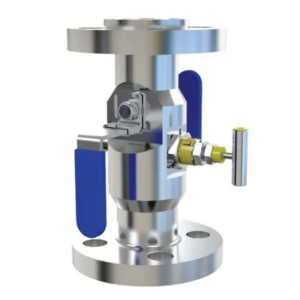
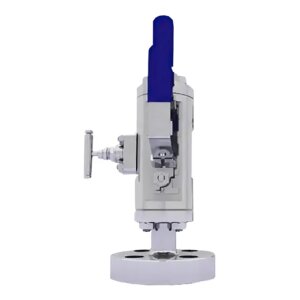
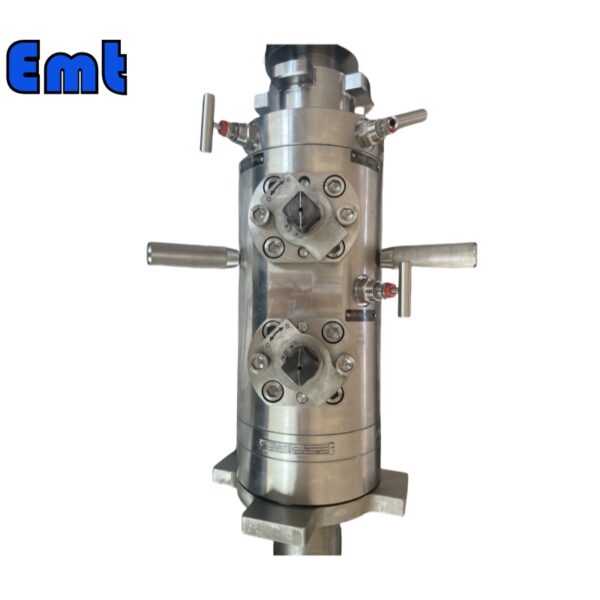
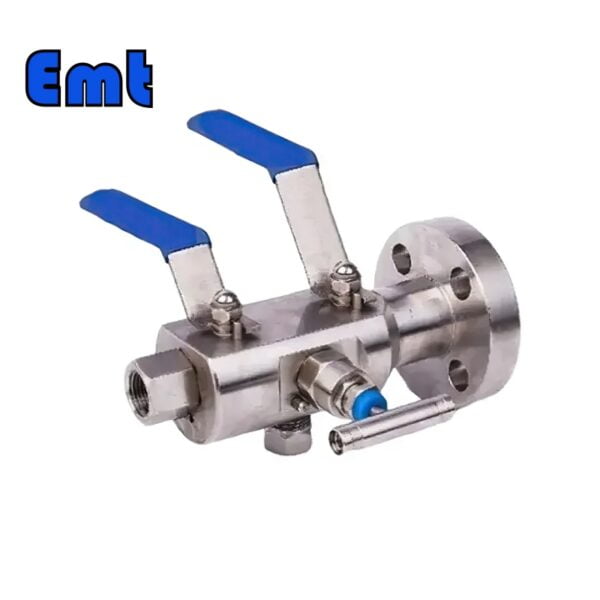

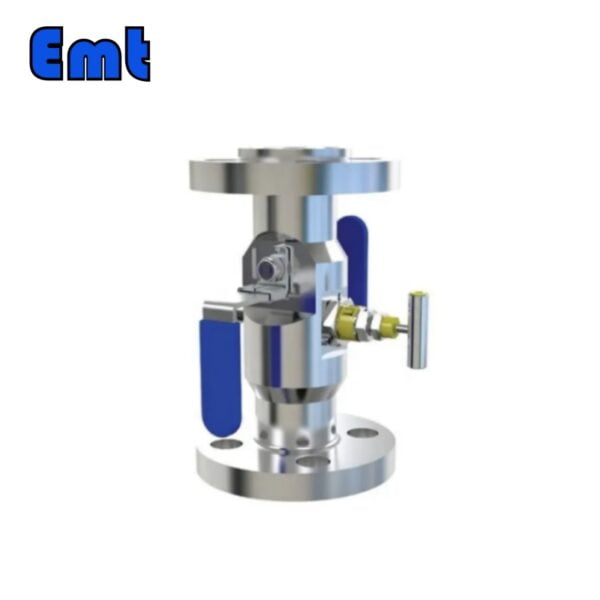
Reviews
There are no reviews yet.